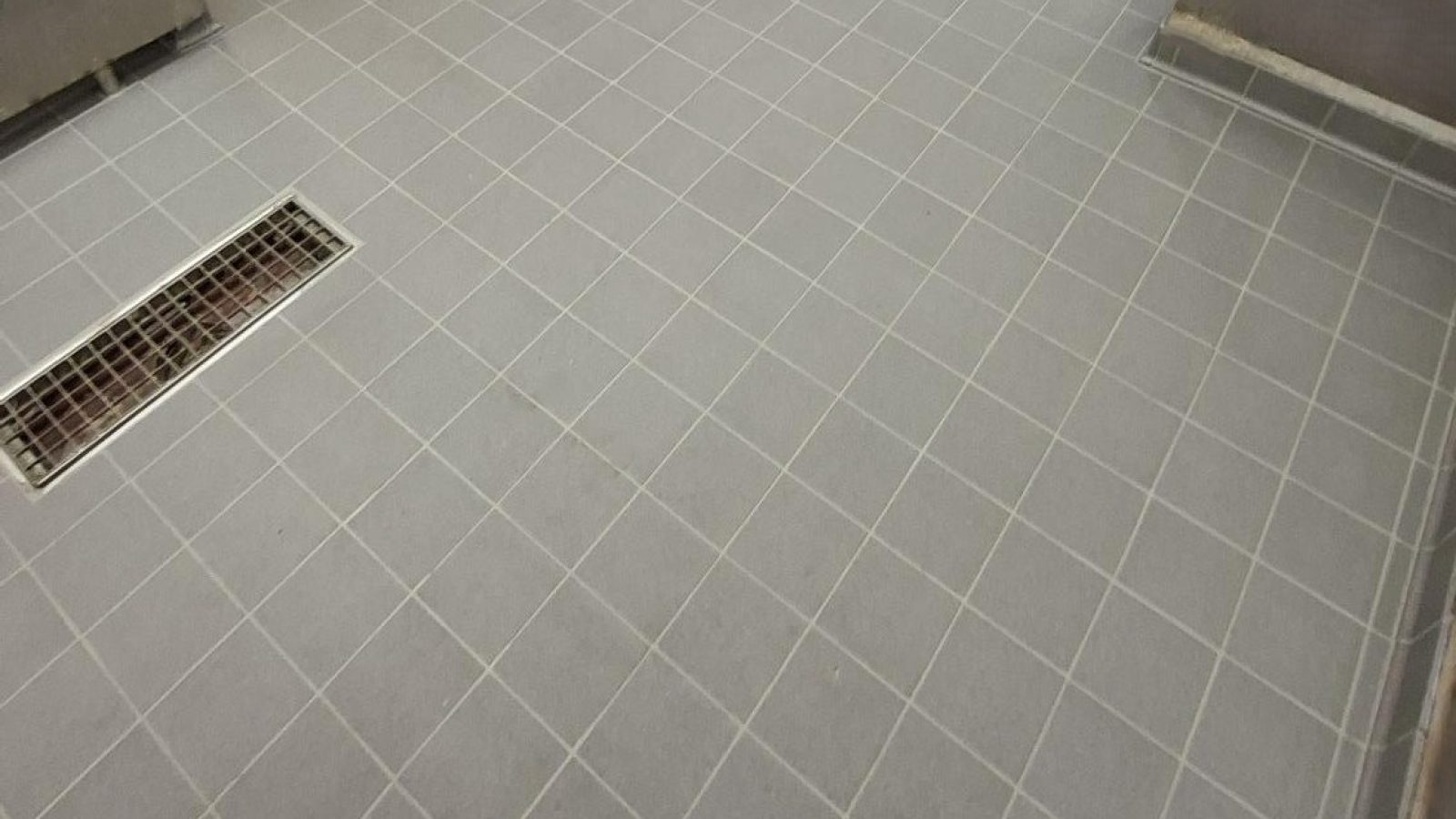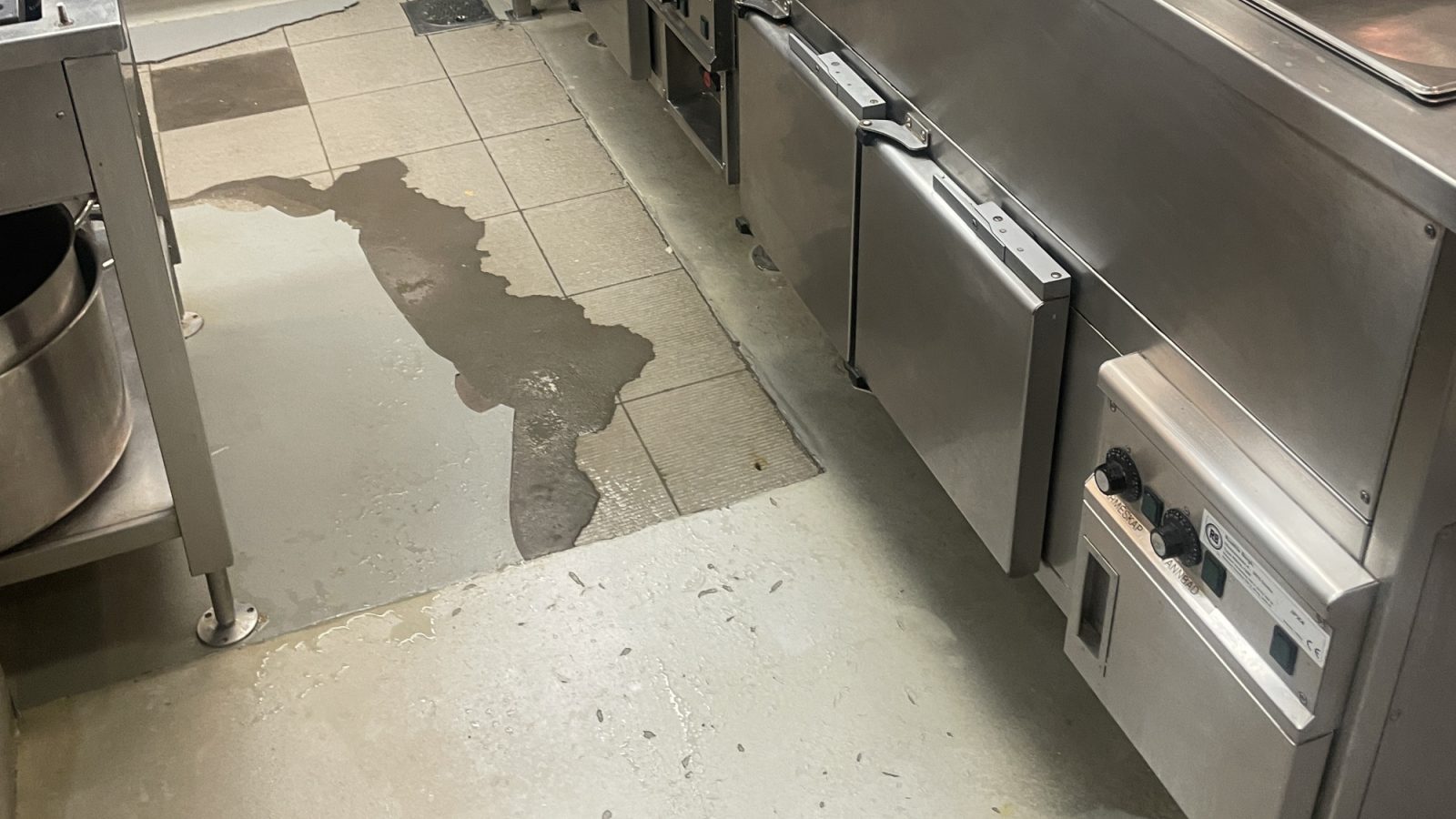ICE UK was recently approached to rectify a significant flooring issue within an offshore galley and pot wash area that had deteriorated rapidly due to poor initial installation.
Despite the floor covering only recently being refurbished, serious faults had already begun to surface highlighting the need for urgent, professional intervention.
The existing floor covering had been poorly patched with various epoxy resins applied directly over existing ceramic tiles. This makeshift solution led to a breakdown in surface integrity, compounded by the improper installation of the channel drains. The loose drains created instability and caused further damage every time the floor was walked on. The client was left with a failing floor surface in a high traffic, critical workspace.

ICE UK’s team conducted a thorough assessment and presented a tailored plan to the client, offering a clear solution around a working galley that would minimise disruption to day to day operations while ensuring long lasting durability. Understanding the operational needs of the facility, ICE UK prioritised a method that combined minimal downtime with maximum performance.
To address the underlying issues, ICE UK proposed removing the entire existing floor system back to the steel base, providing a clean and stable foundation for the new floor system. The solution included reinforcing the main channel drain area to ensure long term structural support, eliminating future movement or instability.

The new subfloor installed was a fire rated A60 screed known for its strength and longevity and completed with 150mm2 non-slip ceramic tiles and epoxy grout. This combination not only ensures durability under constant use but also meets hygiene standards and marine life compatibility, making it ideal for environments exposed to moisture and rigorous cleaning protocols.
The result is a high performance, resilient flooring solution designed to withstand heavy use while maintaining safety and sanitation standards.
ICE UK’s commitment to quality, precision, and minimal disruption continues.